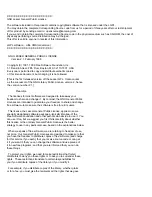
Hard Disk And File Systems
118
Copyright © Acronis, Inc., 2000–2007
A.9.3 FAT32
The FAT32 file system appeared in Windows 95 OSR2 and is also supported by Windows
98/Me and Windows 2000/XP. FAT32 grew out of FAT16. The main differences between
FAT32 and FAT16 are 28-bit cluster numbers and more flexible root folder
implementation, which is not limited in size. The reason for FAT32 is the necessity to
support large (larger than 8 GB) hard disks and the inability to build any more complex
file system into MS-DOS, which is still in the core of Windows 95/98/ME.
The maximum size of FAT32 file system size is
2 Terabytes
.
A.9.4 NTFS
NTFS is the primary file system for Windows NT/2000/XP. Its structure is closed, so no
other operating system fully supports it. The main structure of NTFS is the master file
table, or MFT. NTFS stores a copy of the critical part of the MFT to reduce the possibility
of data damage and loss. All other NTFS data structures are special files.
Like the FAT, NTFS uses clusters to store files, but cluster size does not depend on
partition size. NTFS is a 64-bit file system. It uses Unicode to store file names. It is also a
journaling (failure-protected) file system, and supports compression and encryption.
Files in folders are indexed to speed up file search.
A.9.5 Linux
Ext2
Ext2, one of the main file systems for the Linux operating system, is a 32-bit file system.
Its maximum size is
16 Terabytes
. The main data structure that describes a file is an i-
node. A place to store the table of all i-nodes has to be allocated in advance (during
formatting).Linux Ext3
Officially introduced with Red Hat Linux version 7.2, Ext3 is the Red Hat journaling file
system. It is forward- and backward-compatible with Linux ext2. It has multiple
journaling modes and broad, cross-platform compatibility in both 32- and 64-bit
architectures.
A.9.6 Linux
ReiserFS
ReiserFS was officially introduced to Linux in 2001. ReiserFS overcomes many Ext2
disadvantages. It is a 64-bit journaling file system that dynamically allocates space for
data substructures.











































